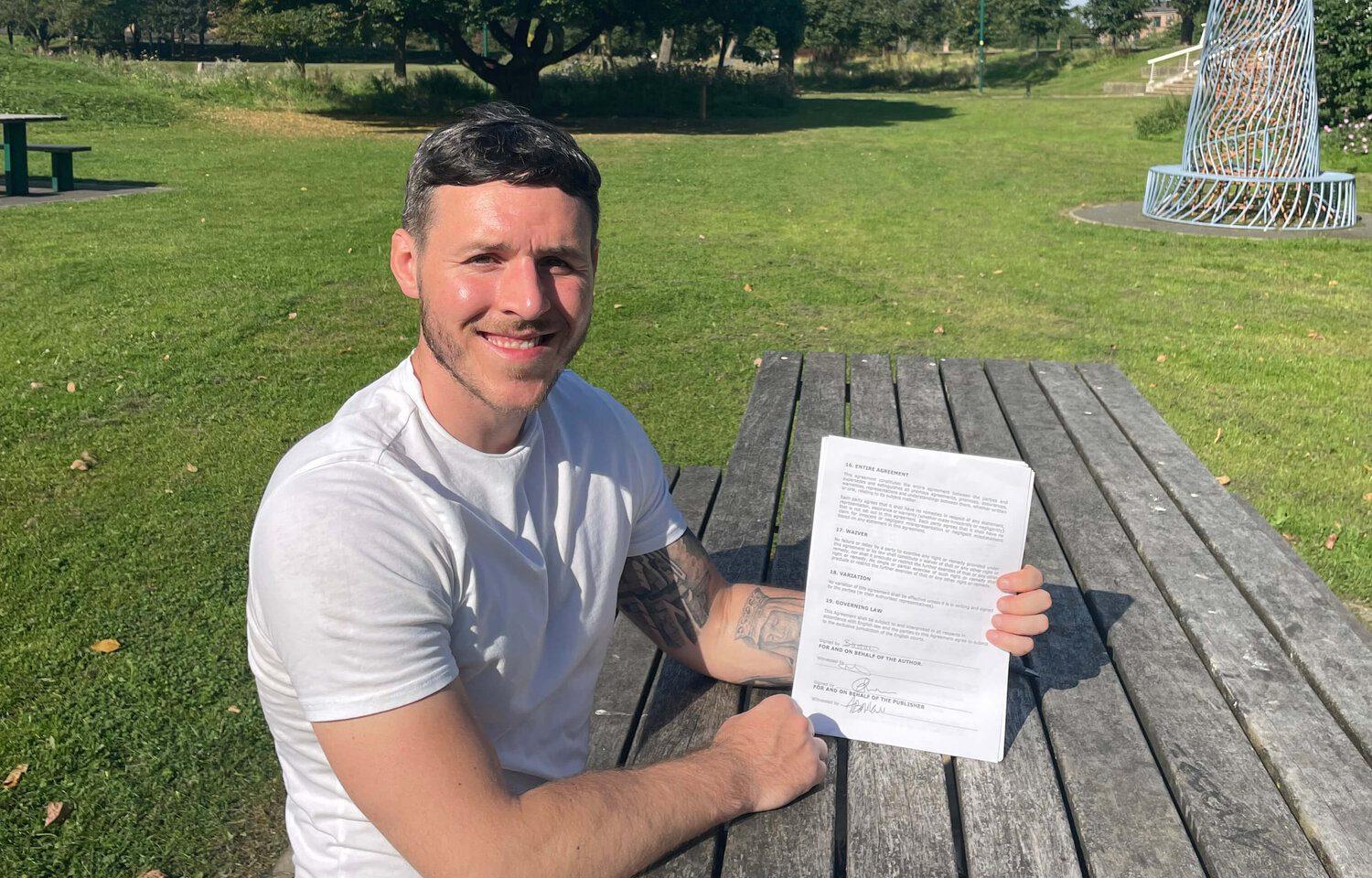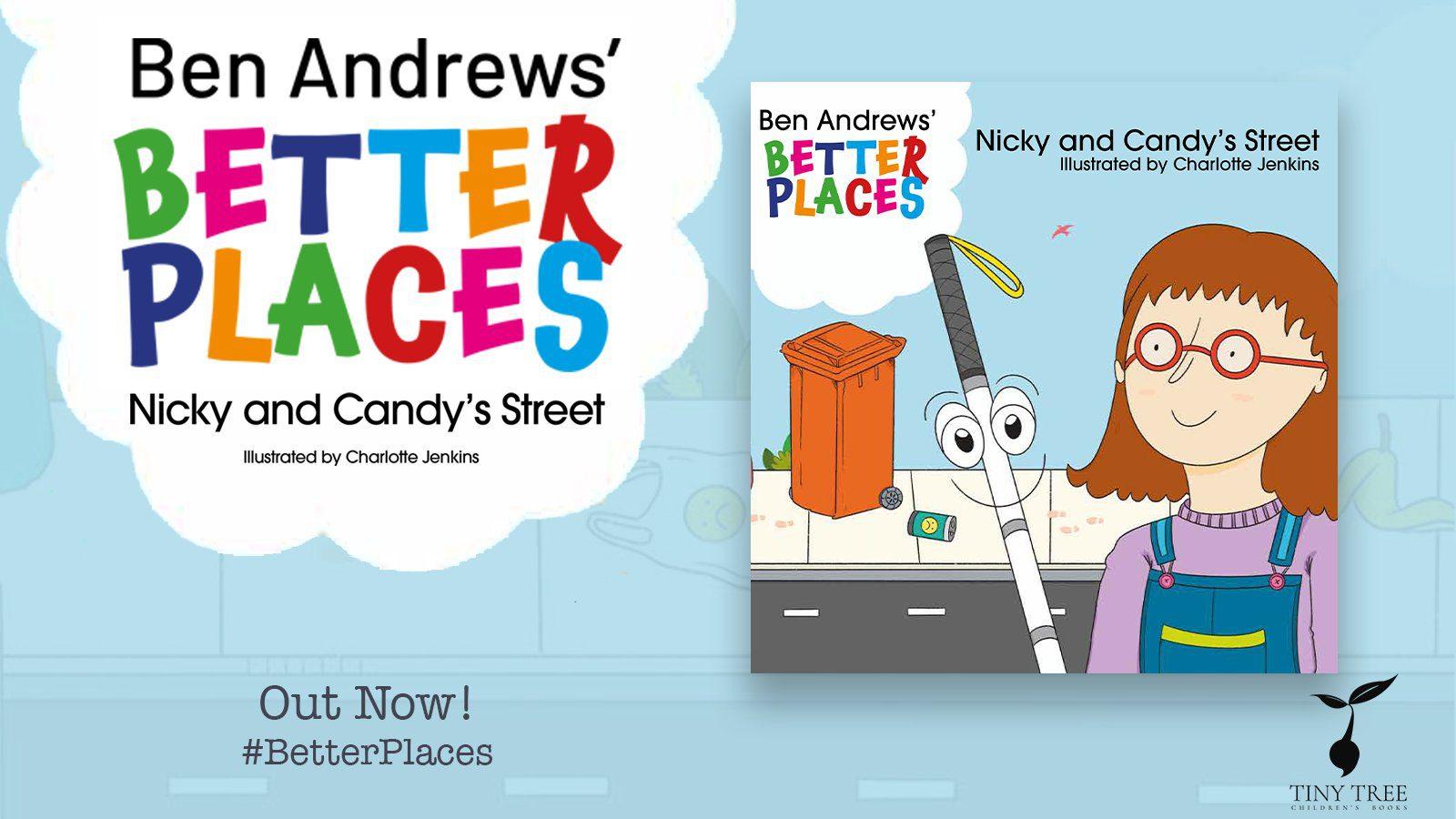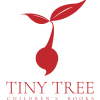
‘My Favourite Children’s Book’ is a series that asks Tiny Tree authors, illustrators, and staff to discuss their favourite children’s book or series. Today Nicky and Candy’s Street author Ben Andrews writes about finding inspiration in ‘The Brave Little Toaster’ and ‘The Day the Crayons Quit’ which led him to write a series of children’s books about disabled people — Better Places.
“I’d never seen an animated white cane, wheelchair, hearing aid or Zimmer frame. I thought how fun it’d be to bring these characters to life…”
by Ben Andrews
One day while scrolling through Facebook, I saw a post that asked, ‘What inanimate objects haven’t been brought to life through animation?” This was obvious. Obvious to me at least, given what I’d grown up around and worked on over the years in making places better for disabled people – aids that disabled people might use.
I’d never seen an animated white cane, wheelchair, hearing aid, or Zimmer frame. I thought how fun it’d be to bring these characters to life, and what stories they’d have to tell. What could those stories be? They’d probably be quite annoyed at the way the world was set up. All the oddly placed signs, posts, and trees white canes are swung and swished into. The bumps and the bangs for wheelchairs. The stares, and the frowns a hearing aid might get. I’m sure, as with many disabled people, these things would annoy these characters and they’d want that to change.
This line of thinking led me down the path of writing my series of children’s picture books about disabled people. A series with these characters are at the centre — Better Places.
“Nicky and Candy’s Street is the first to showcase the interaction between a child and a white cane.”
I soon put pen to paper and before long had my first draft complete. Not having much experience with writing, I wanted to make sure my text was as good as it could be before approaching literary agents and publishers. After approaching a few editors, I got a bit of early feedback I wasn’t expecting; specifically, about my now beloved characters, which went something like: “People are tired of seeing inanimate objects brought to life in children’s literature. This will never work.”
I was shocked: I’d grown up loving films like ‘Toy Story’, ‘Beauty and the Beast’, and ‘Cars’, all of which inanimate objects play the lead role. I still love the animation of inanimate objects today. They play an important role in getting across complex messages in an approachable and fun way – which is what I wanted Better Places, my series of picture books, to be about.
Determined, I wanted to prove the editor wrong (and reassure myself), that inanimate objects are still loved by children and needed in children’s literature. I liked the fun that came about from writing about the aids as characters. I wanted to demystify them for readers. After researching for a while, I realised, there isn’t really a great deal out there. The ones that are out there though are great. My personal favourites being The Brave Little Toaster by Thomas M. Disch and The Day the Crayons Quit by Drew Daywalt and Oliver Jeffers.
“I think I’ll always appreciate inanimate objects being brought to life in this way.”
Both are brilliant books. The Brave Little Toaster is an older one that looks at how our forgotten household items still need a little love. The Day the Crayons Quit, on the other hand, is a more modern best-seller. A clever, funny read, it’s all about how different coloured crayons feel at being over and underused. The way in which both authors were able to take something without a voice, play on their quirks and deficiencies that we know as humans, with humour and wit that children and adults alike can enjoy is impressive and very clever. I think I’ll always appreciate inanimate objects being brought to life in this way.

The enjoyment I got out of reading these books was enough to keep me going with my characters. Nicky and Candy’s Street and the Better Places series is the result.
Nicky and Candy’s Street is the first to showcase the interaction between a child and a white cane. Children up and down the country now have a better understanding of what white canes are used for. Soon they’ll have a better understanding of more aids. We have to give some thanks to a brave little toaster and a group of frustrated crayons for that.
Ben Andrews is the author of Nicky and Candy’s Street and the ‘Better Places’ series of children’s books about disabled people. Ben is registered blind and is a proud advocate for disability rights. You can find more about Ben and his books at www.betterplaces.co.uk
